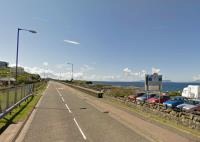This hot story from the news feeds says that insurers are tomorrow going to demand radical changes to the driving test as accident statistics reveal the risks posed by rural roads.
Insurers are demanding:
- six month ban on carrying passengers after test
- 11pm to 4am curfew
- retest after 2-year probationary period
Insurers are meeting ministers this week to discuss road safety. As the report states, any reduction in accidents will bring down insurance premiums.
The report also states that the public supports change, with 76% agreeing some driver restrictions are needed. Obviously, that 76% doesn’t consist of any ADIs if what you read on the forums is anything to go by. The typical ADI is programmed to follow the “if-I-didn’t-think-of-it-then-it’s-a-crap-idea model.
Proposals for change already face an uphill struggle with people like this on the case. This woman’s “expertise” appears to derive from the fact that she was disabled in a car accident nine years ago (and that she’s a paralympian). Somehow, this gives her the insight necessary to claim that imposing restrictions on young drivers will prevent them getting the experience they need to become better drivers. She admits in this interview with Channel 4 that she was a “stereotypical” new driver, driving home from a party with a car full of friends.
She misses the point completely, having fired her gun in the exact opposite direction to the target! Like her, they are having accidents. But do they all need to keep having crashes and maiming themselves in order to “gain experience”?
And the AA also stoked the flames of opposition by claiming restrictions would be “impractical” and hard to police. They reckon more extensive driver training is the answer. Quite how they imagine “more extensive training” is to be policed is open to guesses.
I’m not singling out the AA here, but what we have is group after group after group trying to stake its claim on the road safety map with totally opposing views to each other. Actually cutting accident statistics comes in way behind just talking about it.
Young people have most accidents on rural roads at night, on bends, with a car full of passengers, with no other car involved. This is a simple fact. They are not taught to drive recklessly by their instructors, but they do drive recklessly through their own choices.
“More extensive training” will not change that! Not one iota.
Absolutely nothing so far has managed to control the way young drivers drive. All the namby-pamby stuff about coaching them in their lifestyle choices is like trying to knock down a wall with a feather. It hasn’t happened. It isn’t going to happen.
The time has come to just put a complete manual stop to the main causes of accidents – bravado, inexperience, and distraction (i.e. attitude). By all  means try and deal with those issues separately, but you simply can’t let the carnage continue while every New Age initiative in the meantime fails miserably to change those attitudes.
means try and deal with those issues separately, but you simply can’t let the carnage continue while every New Age initiative in the meantime fails miserably to change those attitudes.
However, the AA does have a valid point – a separate, and well-concealed point – when you consider this report in The Scotsman. It’s part of the same clutch of ABI (Association of British Insurers) press releases ahead of their week in the spotlight. The Scottish story explains that most accidents occur in the rural north east of the country. It tries to explain this away as being due to affluent drivers in fast cars and the rural location per se. What it doesn’t touch upon is the limited amount of driving learners in such areas are going to be asked to do prior to and during their tests.
I’ve reported before that test centres in these extreme rural locations have some of the highest driving test pass rates in the UK. They also have some of the fewest roads to drive on (the picture above shows the largest road in Mallaig, whose test centre has the highest pass rate in the UK). Laughably, instructors in these areas have suggested that it’s because they’re better trainers than those in dense urban areas with much lower pass rates (and high numbers of immigrants and cash-strapped people desperate to pass without paying for lessons). I wonder how they explain the high accident rates?
Everything in the Scottish story points to inexperience again. If you learn to drive and pass your test in an area with perhaps 10km of available road then you’re getting even less experience than those in more expansive areas – and we already know that they are often still inexperienced when it comes to driving on their own (because of perhaps only being taught test routes).
To be fair to Mallaig, it isn’t mentioned in the latest stats for accidents, but it is tucked away in a sparsely populated region. The data in the Scottish report relate to higher population density locations within these rural locations.
The problems all come down to inexperience and immature attitude. Forcing new drivers to take it easy for 6 months, then get re-tested after two years (that’s not going to happen in a million years), would be a great way of giving them vital experience. Increasing the minimum driving age would also help (especially for young males, who are frequently mentally aged 13-15 when their real age is 17. Stuff their “liberties”. Driving is a privilege, not a right.